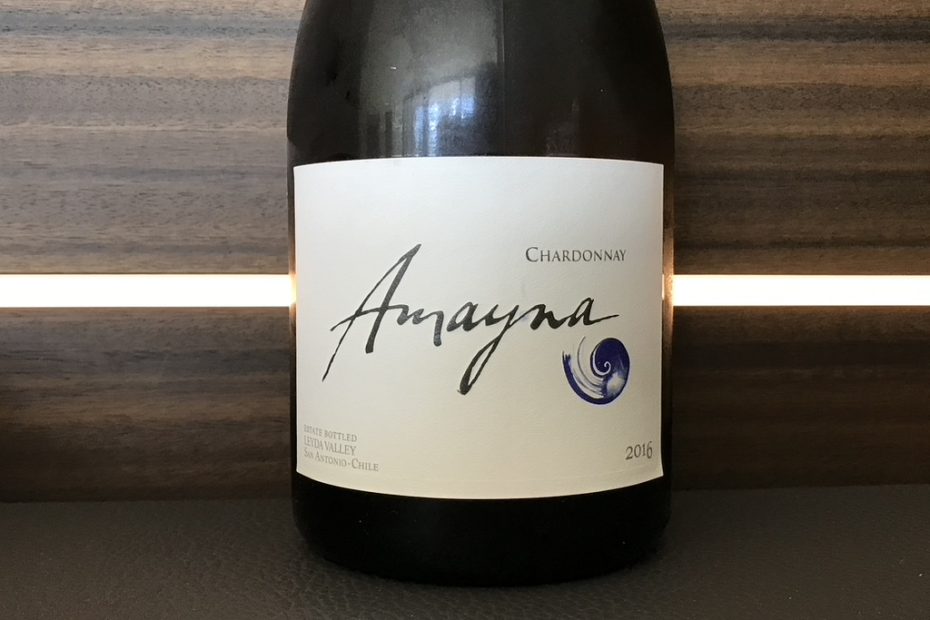Chardonnay, medium deep golden colour, fair amount of body, buttery mouthfeel, clear notes of wood mixed with citrus and tropical fruit. This might sound like a traditional white Burgundy, but that is definitely not the case. Would have been difficult, since it is being produced in Leyda Vally, in faraway Chile...
Chile just might be the perfect wine country. It's a narrow strip of land between the Pacific Ocean and the Andes. In the centre you'll find warm, fertile patches of agricultural land where most cheap red wines come from. On the other hand, in the high north and deep south there's some really cool regions, perfect for the so called cool climate wines. And in between you'll find just about every climate you can think of, which means you can make just about every style of wine you can think of in Chile.
Amayna winery is in one of the cooler areas: San Antonio Vally in the Aconcagua region. And to be more precies: in the Leyda sub-zone of that San Antonio Valley. This will mean very little to most people, but Leyda is a small denomination of origin in the north of Chile, with cold temperatures due to the maritime influences, and wines of high quality. Leyda (and San Antonio) are pretty new wine regions: the first vines were only planted in 1997 and the region wasn't officially recognised until 2002. And Amayna, led by Matias Garcés Silva, was one of the pioneers to discover the potential of the region.
Leyda is mostly known for its Sauvignon Blanc, and Amayna also has several Sauvignon Blancs in their range, but those are for later. For this blog the focus is on that other great white grape: Chardonnay. Amayna offers her version of the traditional white Burgundy, which is definitely worth taking some time and diving in a bit deeper.
Like the Chardonnays from Burgundy, the Amayna Chardonnay has a pretty deep, golden colour. If you waltz the glass and look at the tears, you'll see they are pretty thick, which betrays an alcohol level that is slightly more elevated than what you'd find in central France: 14%. During the waltzing a lot of different aromas will also arise. The wine's backbone is very minerally, especially when the wine is still pretty cold, with some green and vegetal aromas. Feel free to let the wine warm up a bit, so you can also enjoy the ripe apricot en pineapple that develop in the glass. You' also find some typical sherry aromas: nuts, hay and roasted almonds. But the basis remains the minerality, which remains very present even when the more complex aromas come through.
In the mouth, the minerality is less present, and you'll mostly enjoy the tropical fruit, apricots and almonds. The wine has a nicely round, buttery texture, not too high acidity, and despite the 14% alcohol it never feels heavy. It's a wine that can rest for a few more years, but I won't stop you if you want to open it now. You can drink it by itself, but because of the weight of the wine you can also serve several dishes. Obviously no heavy meat dishes, but the wine will go perfectly with fish and a creamy sauce, or even lobster. I've paired it with a rice dish and scampi, I can definitely recommend the combination!

